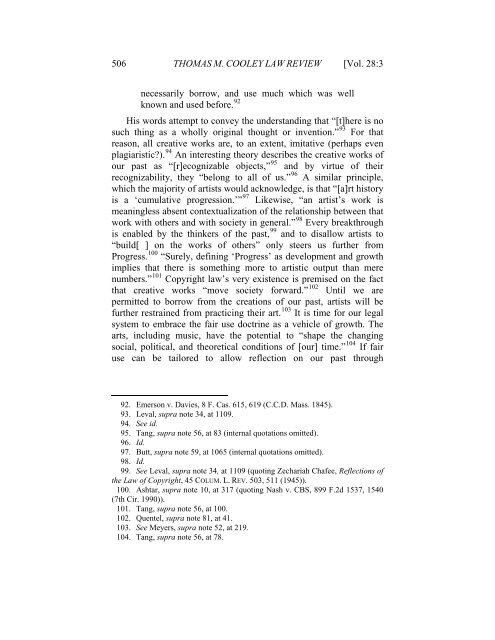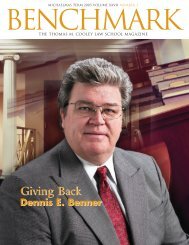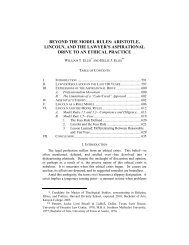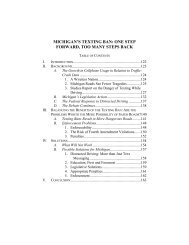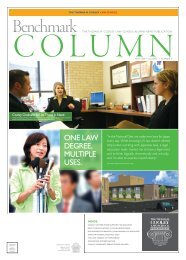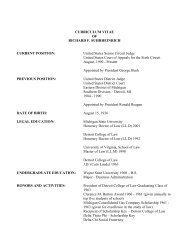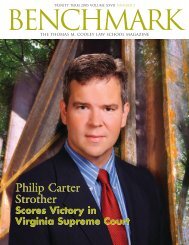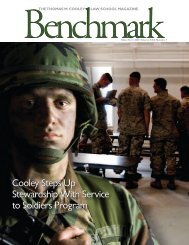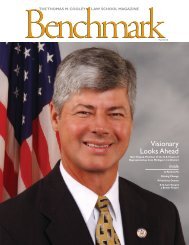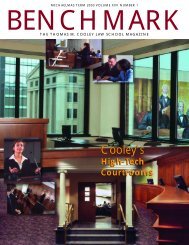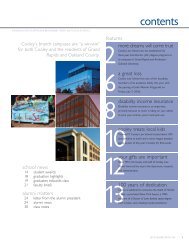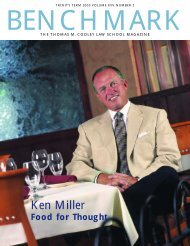Blanch It, Mix It, Mash It - Thomas M. Cooley Law School
Blanch It, Mix It, Mash It - Thomas M. Cooley Law School
Blanch It, Mix It, Mash It - Thomas M. Cooley Law School
You also want an ePaper? Increase the reach of your titles
YUMPU automatically turns print PDFs into web optimized ePapers that Google loves.
506 THOMAS M. COOLEY LAW REVIEW [Vol. 28:3<br />
necessarily borrow, and use much which was well<br />
known and used before. 92<br />
His words attempt to convey the understanding that “[t]here is no<br />
such thing as a wholly original thought or invention.” 93 For that<br />
reason, all creative works are, to an extent, imitative (perhaps even<br />
plagiaristic?). 94 An interesting theory describes the creative works of<br />
our past as “[r]ecognizable objects,” 95 and by virtue of their<br />
recognizability, they “belong to all of us.” 96 A similar principle,<br />
which the majority of artists would acknowledge, is that “[a]rt history<br />
is a ‘cumulative progression.’” 97 Likewise, “an artist’s work is<br />
meaningless absent contextualization of the relationship between that<br />
work with others and with society in general.” 98 Every breakthrough<br />
is enabled by the thinkers of the past, 99 and to disallow artists to<br />
“build[ ] on the works of others” only steers us further from<br />
Progress. 100 “Surely, defining ‘Progress’ as development and growth<br />
implies that there is something more to artistic output than mere<br />
numbers.” 101 Copyright law’s very existence is premised on the fact<br />
that creative works “move society forward.” 102 Until we are<br />
permitted to borrow from the creations of our past, artists will be<br />
further restrained from practicing their art. 103 <strong>It</strong> is time for our legal<br />
system to embrace the fair use doctrine as a vehicle of growth. The<br />
arts, including music, have the potential to “shape the changing<br />
social, political, and theoretical conditions of [our] time.” 104 If fair<br />
use can be tailored to allow reflection on our past through<br />
92. Emerson v. Davies, 8 F. Cas. 615, 619 (C.C.D. Mass. 1845).<br />
93. Leval, supra note 34, at 1109.<br />
94. See id.<br />
95. Tang, supra note 56, at 83 (internal quotations omitted).<br />
96. Id.<br />
97. Butt, supra note 59, at 1065 (internal quotations omitted).<br />
98. Id.<br />
99. See Leval, supra note 34, at 1109 (quoting Zechariah Chafee, Reflections of<br />
the <strong>Law</strong> of Copyright, 45 COLUM. L. REV. 503, 511 (1945)).<br />
100. Ashtar, supra note 10, at 317 (quoting Nash v. CBS, 899 F.2d 1537, 1540<br />
(7th Cir. 1990)).<br />
101. Tang, supra note 56, at 100.<br />
102. Quentel, supra note 81, at 41.<br />
103. See Meyers, supra note 52, at 219.<br />
104. Tang, supra note 56, at 78.


